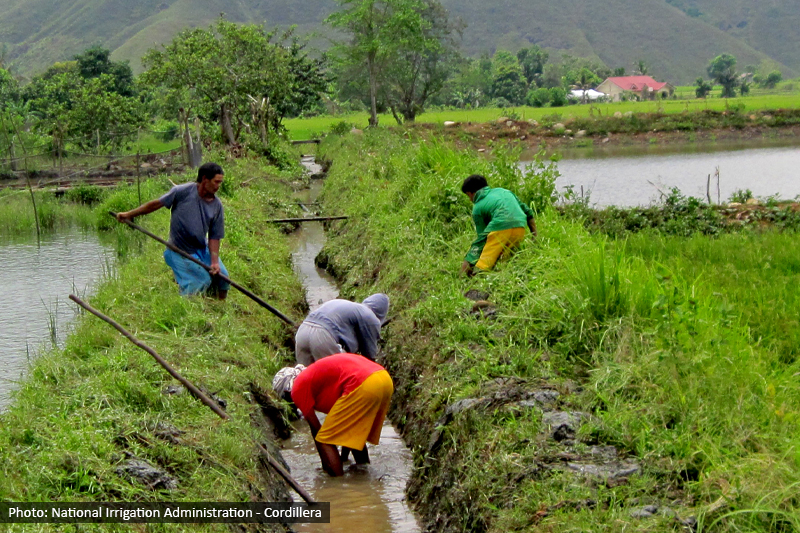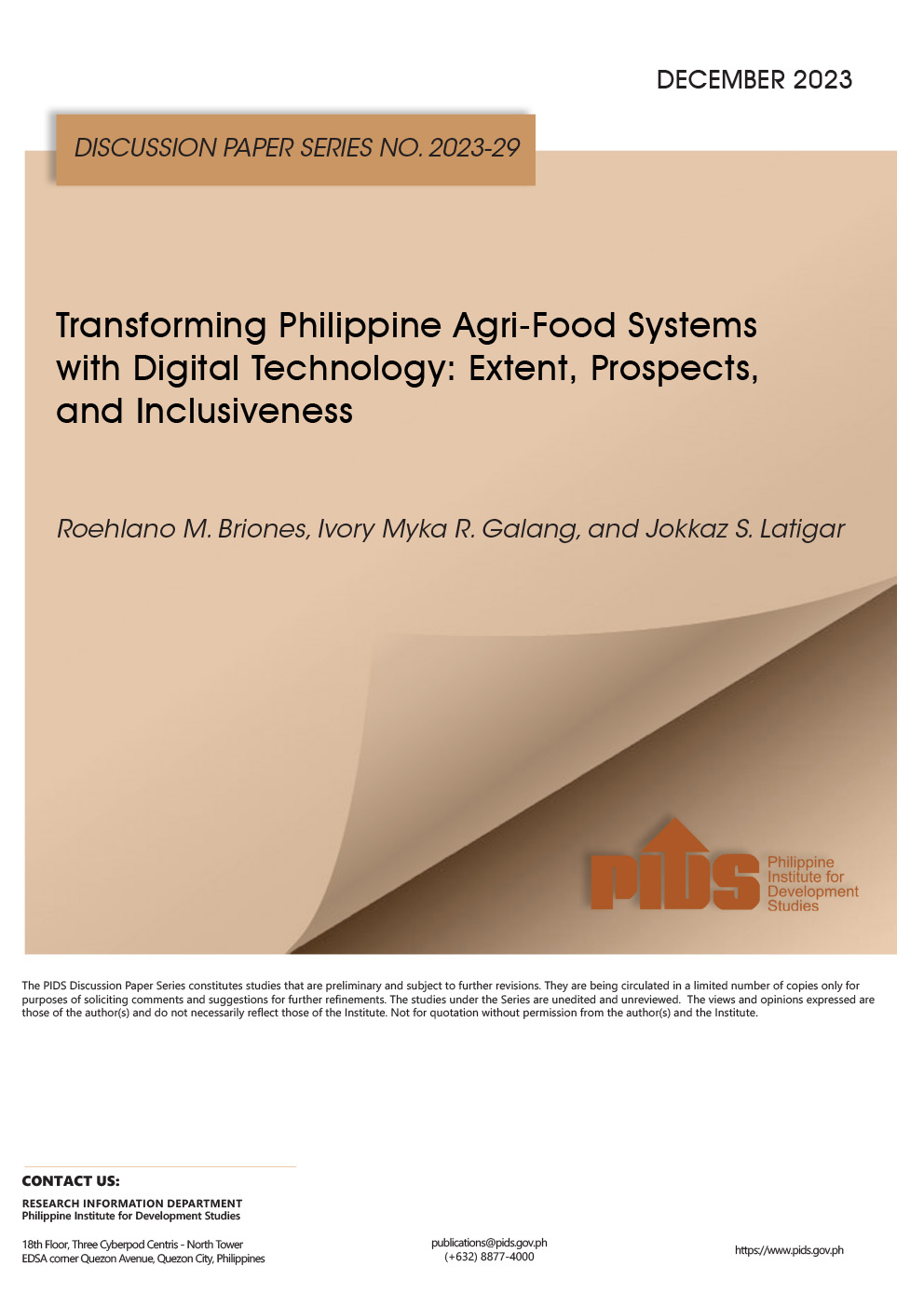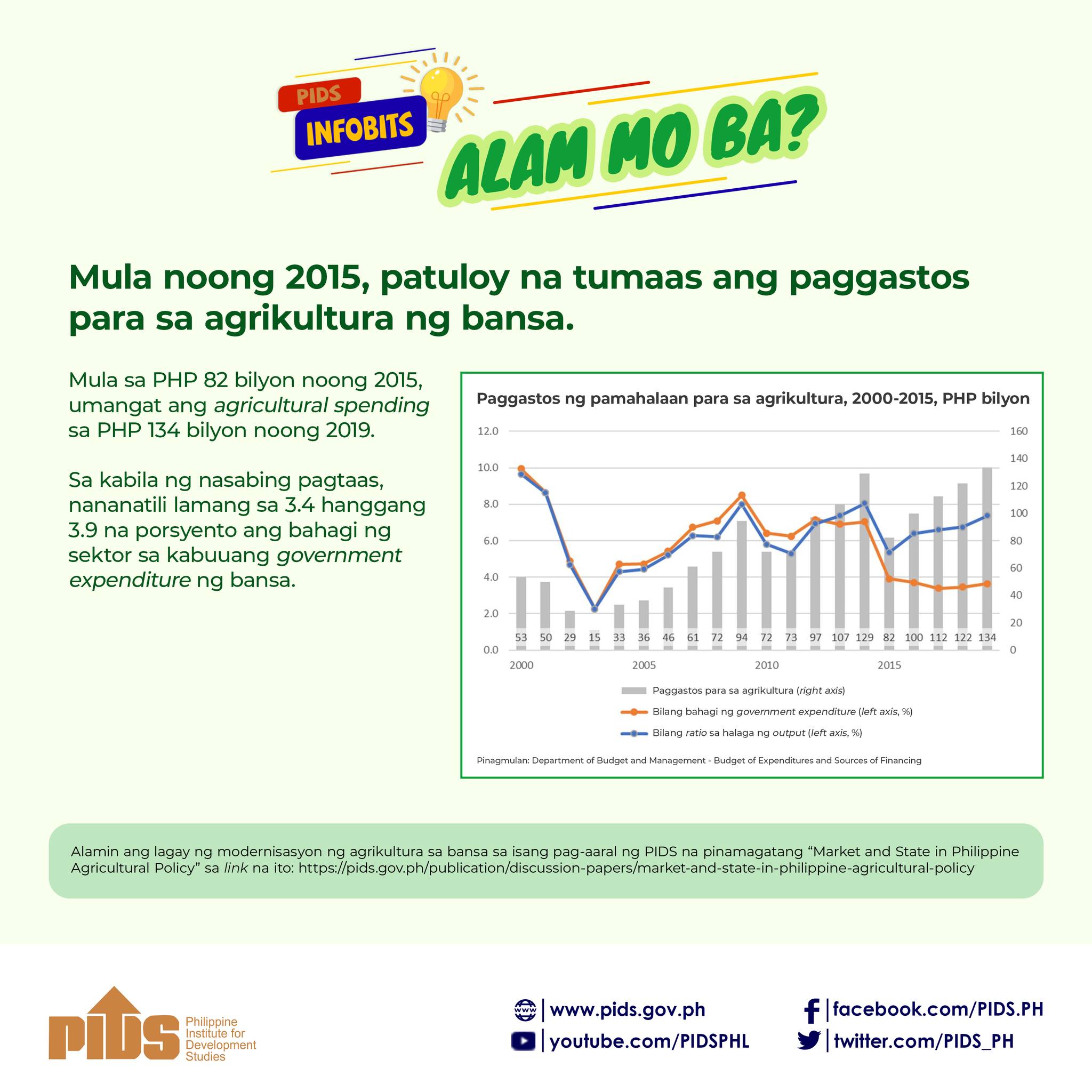
The National Irrigation Administration (NIA) may need to reconfigure its functions and staff complement in line with the Free Irrigation Service Act (FISA).
This is according to the Philippine Institute for Development Studies’ (PIDS) latest Research Paper Series titled “Assessment of the Free Irrigation Service Act”. The study is a preliminary assessment of FISA by examining secondary data and conducting interviews and focus group discussions.
Signed into law in 2018, FISA exempts farmers with landholdings of 8 hectares or less from paying irrigation service fees (ISFs). These landholdings constitute over 98 percent of all farms/holdings in the country.
With the repeal of the collection of ISF, NIA is no longer expected to generate revenues. FISA covers budgetary requirements for operations and maintenance as well as capital cost of irrigation systems.
This implies that NIA, a government office mandated to develop all possible water sources for irrigation, is transitioning from “a fee-collecting agency” to one that specializes in “technical assistance, contract design, and performance monitoring”.
Given this development, PIDS Senior Research Fellow Roehlano Briones, PIDS consultant Roberto Clemente, De La Salle University School of Economics Department Chair Arlene Inocencio, UP Los Baños Professor Roger Luyun, Jr., and UP Los Baños Professor Emeritus Agnes Rola, authors of the study, raised the need to revisit the functions and organizational structure of NIA so “it can focus on its core mandates in relation to O&M [operations and maintenance]” of irrigation systems.
They noted that NIA had to hire full-time staff to collect ISFs and [communal irrigation system] amortization in the past. But this may no longer be necessary. At present, the staff needed are those with appropriate skills in capacity building and monitoring and evaluating the irrigation management transfer program.
Briones and his coauthors also said that under the old system, employees’ compensation was tied to ISF collections that often leads to delays in the release of staff salaries. With FISA, the funding for O&M is remitted directly by the Department of Budget and Management to NIA; hence, delays in the release of salaries are likely to be avoided.
Incentives for NIA employees are likewise derived from ISF revenues. The Variable Incentive Grant (VIG), for instance, is given to staff at the end of the year based on physical performance and financial self-sufficiency indicators. But since ISFs are no longer collected, the VIG will have to be replaced with a different incentive scheme.
Meanwhile, the authors made other recommendations based on their initial assessment of the Act.
They urged the executive branch to continuously pursue “irrigation management transfer within the context of free irrigation based on minimum maintenance for NIA and transparent maintenance standards for both NIA and irrigators’ associations”.
They also called on the government to “explore water saving as a performance criterion in subsidy for O&M” as well as to sustain and increase subsidy for O&M, which they said “must be made available only on a performance basis”.
Lastly, they proposed the “introduction of a mandatory review comparing the FISA with other social assistance and protection schemes in achieving equity objectives”. ###
The full paper may be downloaded from this link.
This is according to the Philippine Institute for Development Studies’ (PIDS) latest Research Paper Series titled “Assessment of the Free Irrigation Service Act”. The study is a preliminary assessment of FISA by examining secondary data and conducting interviews and focus group discussions.
Signed into law in 2018, FISA exempts farmers with landholdings of 8 hectares or less from paying irrigation service fees (ISFs). These landholdings constitute over 98 percent of all farms/holdings in the country.
With the repeal of the collection of ISF, NIA is no longer expected to generate revenues. FISA covers budgetary requirements for operations and maintenance as well as capital cost of irrigation systems.
This implies that NIA, a government office mandated to develop all possible water sources for irrigation, is transitioning from “a fee-collecting agency” to one that specializes in “technical assistance, contract design, and performance monitoring”.
Given this development, PIDS Senior Research Fellow Roehlano Briones, PIDS consultant Roberto Clemente, De La Salle University School of Economics Department Chair Arlene Inocencio, UP Los Baños Professor Roger Luyun, Jr., and UP Los Baños Professor Emeritus Agnes Rola, authors of the study, raised the need to revisit the functions and organizational structure of NIA so “it can focus on its core mandates in relation to O&M [operations and maintenance]” of irrigation systems.
They noted that NIA had to hire full-time staff to collect ISFs and [communal irrigation system] amortization in the past. But this may no longer be necessary. At present, the staff needed are those with appropriate skills in capacity building and monitoring and evaluating the irrigation management transfer program.
Briones and his coauthors also said that under the old system, employees’ compensation was tied to ISF collections that often leads to delays in the release of staff salaries. With FISA, the funding for O&M is remitted directly by the Department of Budget and Management to NIA; hence, delays in the release of salaries are likely to be avoided.
Incentives for NIA employees are likewise derived from ISF revenues. The Variable Incentive Grant (VIG), for instance, is given to staff at the end of the year based on physical performance and financial self-sufficiency indicators. But since ISFs are no longer collected, the VIG will have to be replaced with a different incentive scheme.
Meanwhile, the authors made other recommendations based on their initial assessment of the Act.
They urged the executive branch to continuously pursue “irrigation management transfer within the context of free irrigation based on minimum maintenance for NIA and transparent maintenance standards for both NIA and irrigators’ associations”.
They also called on the government to “explore water saving as a performance criterion in subsidy for O&M” as well as to sustain and increase subsidy for O&M, which they said “must be made available only on a performance basis”.
Lastly, they proposed the “introduction of a mandatory review comparing the FISA with other social assistance and protection schemes in achieving equity objectives”. ###
The full paper may be downloaded from this link.












